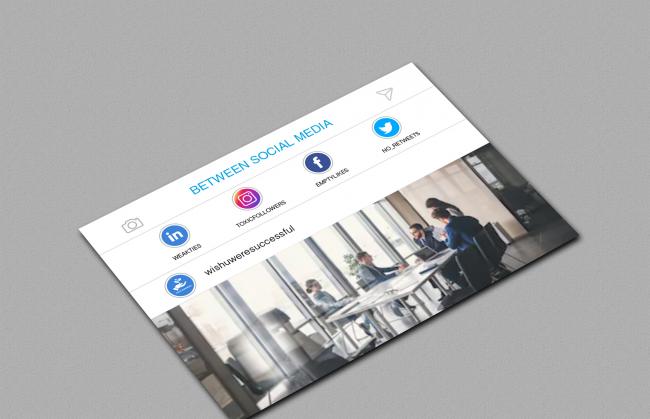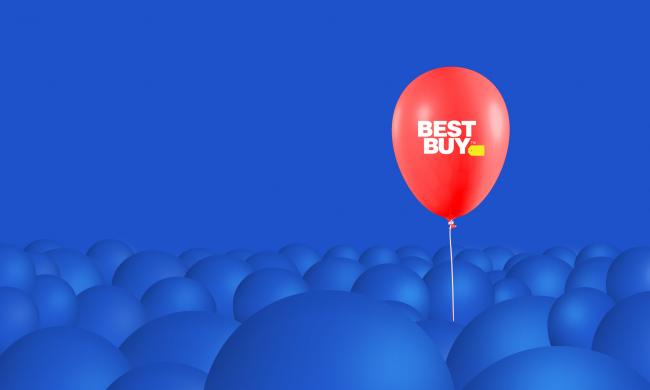Have you ever wondered why some startups skyrocket while others fall flat?
Many things can stunt business growth and hold back your products or services: ineffective leadership, not knowing your numbers, focusing on too many strategies, focusing on the wrong strategies, using the wrong metrics to measure the successes of your strategies, having a “know it all ”attitude, having a “do it all” attitude, lacking marketing tactics, making significant marketing mistakes, lacking salesforce or business development efforts, not spending the budget strategically, managing time poorly, operating inefficiently, the market simply not needing your product or service, and more. Countless books have been written on the factors that determine whether a startup company or business idea will fail, so it’s impossible to thoroughly cover this subject in a short blog. However, without diluting all the pertinent reasons as to why a small business can fail, this post will point out a few common mistakes that block small business growth.
Statistics indicate that the Millennial generation now accounts for over one-third of all US workers. By 2025, Millennials will represent 75% of the global workforce. Unlike preceding generations, a large segment of the young blood population in the workforce aspires to be entrepreneurs and business owners because they believe that there is more job security in owning a business rather than building a business for someone else. There are merits to investing in your own future and working for yourself instead of building someone else’s future. However, currently, statistical data does not support the “stability” thinking behind starting one’s own business. According to recent data published by the US Small Business Association, only 78.5% of small businesses survive past the first year. Actually, for 21.5% of small businesses, the journey ends before the first year is even over. Getting into the pros and cons of owning your own business vs. working for someone else could be a lengthy endeavor, as arguments can be made for both sides and that is an entirely different topic. However, keep in mind that starting or growing a small business is not as easy as it sounds. The odds are actually stacked against you! Just ask the 21.5% of people who owned small businesses last year and who are no longer in business this year!
Starting a small business today takes more than turning on a computer or opening a door. Recently, some of the biggest players in business have become obsolete, irrelevant, or even nonexistent – and this trend will continue over the months and years ahead. So, in part, small business success and growth is about preservation. It is also about making the right choices and investing wisely along the way. How does a small business today become a small business success story? Here are three important tips that are often overlooked but that can make or break a startup or small business: time management, running a business vs. building a business concept, and investing wisely in marketing.
Time Management – Of course, when you start your own business, because of the leanness of your team, you are responsible for everything from A to Z. Most small businesses start with one person or a handful of people, so it is important that everyone pitches in to get the business off the ground and grow it from the ground up. However, there is a difference between pitching in and having a “do it all” attitude, and it seems that a fine line can easily be crossed between the two – which is a catastrophic mistake. The time of a small business owner is an invaluable commodity, so he or she must invest it wisely. For example, if you have just become a sole legal practitioner or launched a small law firm with a couple of your industry colleagues, would it be wise for the fee earner(s) to invest their time in designing a logo, designing facility signage, coming up with slogans, developing brochures, writing capability pieces, designing and printing business cards, and designing a website? Or would it make more sense for the lawyers to practice law and bill clients for their legal fees?
There is no mystery behind time management. Everyone has 24 hours a day and 168 hours a week in which to eat, sleep, groom, work out, use social media, do in-person networking, attend social events, and, yes … work. If a small business owner wants to get the most from the hours allotted to him/her to build a business, that owner will need to do a bit of planning to manage time. Affordably outsourcing activities that fall outside the scope of your products or services and business can be a huge timesaver and allow you to stay laser-focused on the big goal – your business growth. Time lost can never be regained. With so many small businesses failing in the first year, time is not on your side, so use it wisely!
• Running a Business vs. Building a Business – There are significant differences between these two things. Unless a small owner takes conscious control of building his/her business vs. simply running it, growth could get lost in the day-to-day shuffle. If you want to build your business, the leaders must preserve the growth plans and growth values instead of being blindly pulled in too many directions. If you are a small business owner, you must ask yourself: “Is this what I need to be doing right now to build and grow my business?” If the answer is “no” or murky, you probably shouldn’t be doing what you are doing. You should move on! If you ask yourself this question daily, you will catch yourself doing things you simply can’t justify spending time on because it takes time away from the focus of growing your business. Sure, these things might be part of running your business (every business needs a logo, every law firm needs a brochure, and every lawyer needs a business card). However, is the business owner(s) devoting hours to this task actually part of growing the business? What you want to do and what you need to do to build your business are often not the same things. Learn to consciously shift your attention to the activities that better serve the requirements of your business growth and that will keep your small business on its growth track is critical for the success of any small business. For example, one of DDP’s small business clients makes a product for scalp and skin rejuvenation. This company has only a handful of people working on growing the business, while we help them run their business with our advance fulfillment services. We assemble their kits, print their labels and boxes, and use variable data printing to directly ship their products to their many medical clients. We have become an extension of their team and we help them run their business so that the owner and team members can focus mainly on building it. The client wants to focus most of their time on building the team, building systems, driving strategies, implementing processes, executing action plans, marketing, sales, forecasting, and measuring success. Their business has grown rapidly in the last 24 months. To take your business to the next level, you must position it for growth! If you don’t prioritize the things you must do to promote business growth, your small business could be taken down faster than a tsunami wave! When your small business is in the first stages of the business lifecycle, creating strong and reliable alliances for outsourcing services can expand your business capabilities and address some of the challenges involved in running a business, without incurring the steep operation costs that accompany in-house expansion. Resource up! Don’t be afraid to invest in valuable but affordable services that will enable you to run your small business more efficiently and easily and that will allow you – as the business owner and leader – to shift more focus to the business strategy, sales targets, and growth. After all, you are not working a day job at the business; you are the business’s owner. As such, your job is to lead your company toward success.
Invest in Effective Marketing – What else is in the secret sauce of running a successful small business and positioning it for growth? Effective marketing that leads to sales!
Unfortunately, a small business does not have access to large corporate marketing or sales infrastructure and budgets, like big organizations do. So, if you are busy running your business or are not investing your time wisely, who is focusing on the marketing and sales efforts? Actually, growing a business forces those involved to invest a substantial amount of time into doing their own marketing and learning how to sell their own products or services so that they can make money. Remember, sales is the lifeblood of any business. If you own a small business and can’t sell, or don’t have time to sell, your business will probably not get very far.
The truth is, many people, regardless of their profession or education, think that they are marketing experts. However, not everyone is a marketing guru, and to grow your small business, you must be able to convert a prospect into a customer or have an expert marketer in your corner. Marketing is not as easy as it might look because effective marketing involves attracting leads, generating interest and engagement, and prompting decisions and actions to convert leads into sales. Phew … just saying it is exhausting. Imagine all the steps required to effectively implement these efforts! A marketing expert recognizes not only that marketing in today’s world involves the traditional marketing funnel but also that he/she understands how the internet expanded the funnel and changed the way that marketing works.
In addition to the traditional elements of the marketing funnel (awareness, interest, consideration, intent, evaluation, and purchase), technology has expanded the traditional sales journey and added additional layers to the funnel, including adaptation (onboarding tools to set up lasting relationships), retention (tactics to build lasting relationships), expansion (connecting to and learning from custom or client relationships), and building customer or client advocacy (converting customers to brand ambassadors).
If that doesn’t complicate matters enough, omnichannel marketing requires not only a better look at the traditional funnel, which might no longer be linear for your product or service, but also a deeper understanding of the customer or client journey, prepurchase, and post-purchase. You should now know not only where your sales are coming from (face-to-face meetings, walk-in business, referrals or your networks, signs, the distribution of marketing collateral, online reviews, a website, social media, in-store displays or other powerful print media elements, etc.), but also how best to reach your desired audience. Once you figure that out, you must determine how to develop a deeper relationship with them before your competitors do. That’s why successfully marketing your small business today requires an omnichannel marketing approach versus only a multichannel approach of casting a wide net. Now, this does not mean that your small business should tackle every layer of the marketing funnel or use all the marketing channels available online and offline to market your business. However, to succeed, small business marketing efforts must make it as easy as possible for customers and clients to find them. Different channels serve different purposes and each has different audiences. Depending on the nature of your business and what you are trying to accomplish, how you engage with customers and clients can have a big impact on your sales, brand awareness, and customer/client retention.
Some small business owners have built the entirety of their businesses on social media platforms like Instagram or TikTok. These owners would likely disagree with the assertion that while most businesses must be on social media, they should also use more than one marketing channel. Some small businesses have even abandoned their websites and use only social media to market themselves because they feel that this is the best strategy for building their brands and selling their products or services. However, let me point out that Myspace, Google Plus, Vine (which was like TikTok), Yik Yak, Friendster, Meerkat, Google Wave, Google Buzz, DailyBooth, FriendFeed, Hi5, Qzone, and other social media platforms are now quietly RIP. Building your entire business on one or a few social media accounts puts your brand and business in an extremely vulnerable position. If you want to build customer loyalty, brand recall, and customer retention, understanding your customer touchpoints significantly matters to guide the success of your marketing, including the prepurchase and post-purchase journey. For example, if you own a restaurant, your marketing should focus mainly on four key customer touchpoints: your website (where people can place orders), storefront, online listings (Grubhub, Google listings, Yelp, etc.), and Instagram (which you can use to funnel followers onto your ordering platforms). By focusing on a series of consistent marketing interactions driven by the key touchpoints across only the best marketing channels (digital and in-person) for your business, your small business marketing efforts will attract new customers and drive growth. For instance, in the restaurant example, traditional print marketing is equally as important and supports the online efforts; if someone finds a restaurant online and decides to visit the location only to discover an old awning, sun-faded signs, and menus that are falling apart, the potential customer will likely choose to dine somewhere else or might even leave a bad review.
Social media marketing can be a very powerful tool – but not an all-powerful one. Certainly, social media is an affordable tool that you can use to support some of the marketing tactics in your overall business plan (that three-year or five-year strategic business growth plan that you initially developed and regularly refer back to as a roadmap for growing your small business). However, when you are trying to grow your business or build your brand, it’s important to use social media as a tool that’s part of a greater strategy, with appropriate expectations and a clear understanding of its limitations, particularly when it comes to long-term sustainability. For example, about 18 months ago, there was a small business on Insta that was a huge social media sensation (aka a small business success story). The business was sourcing unique pieces (logo buttons, broke logo pins, logo key chains, etc.) from Chanel, Gucci, Dior, and other widely recognized brands, then repurposing these materials to create one-of-a-kind jewelry for thousands of followers. The company was creating beautiful pieces! Drop after drop, the business would sell out of all of the items (within a minute after going live). Initially, it was difficult to purchase a piece because they were never available. Fast forward to today: The business is lucky if they sell a handful of pieces from any of their recent drops. Might there have been other ways to effectively market this idea besides relying solely on social media? Yes. But unfortunately, this business matured on Instagram, and several copycats are now doing the same thing on Etsy and other places online. The marketing approach was flawed. The aforementioned business used marketing to create a novelty product instead of a sustainable business or brand that could have been known for making designer jewelry accessible by taking vintage designer elements to create one-of-a-kind pieces – for each individual customer.
The reality is, social media has become a large part of our daily lives. We get our news from it, we keep up with birthdays through it, and we use it to let people know every thought we have or action we take (though most people are really not that interested). We place so much value on the way we look to others on social media that the lines have been blurred between what social media can and can’t do for your business growth. It's important for a small business to create a cohesive experience across their marketing campaigns and channels, instead of focusing on one-off marketing efforts or relying on one channel for all of their sales and marketing activities.
Once you’ve decided that you’re ready to level up your small business, you must rethink how you are investing your time, how you are using your limited budget to expand your resources and capabilities, and how you are allocating your restrictive budget to effectively stretch your marketing dollars to positively impact business growth. Consider spending your time, budget, and energy wisely in these three key areas, which will quickly help your small business thrive!

About Blogger
Soraya E. Bosi is the Chief Strategy & Client Development Officer at DDP, a communication solution and print strategies company that helps businesses build their brands, draw in audiences,
GET A QUOTE
We Help Businesses
Succeed!




